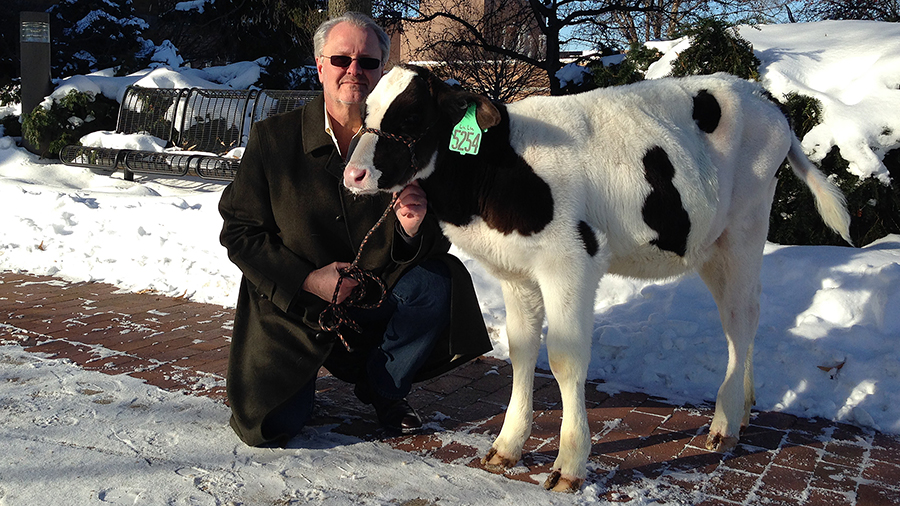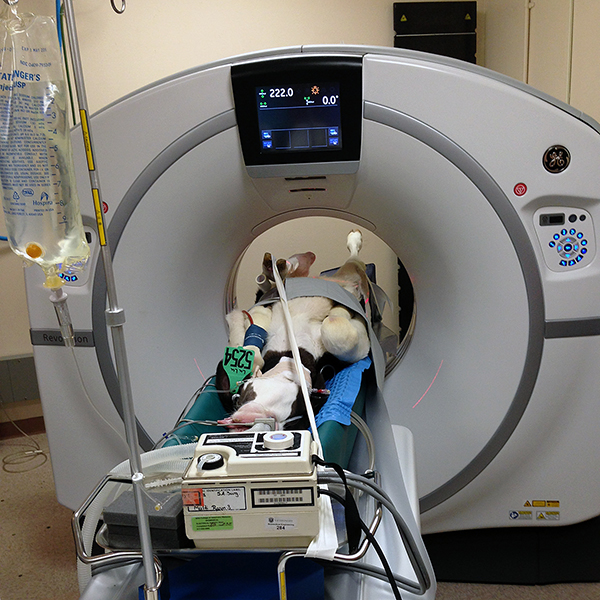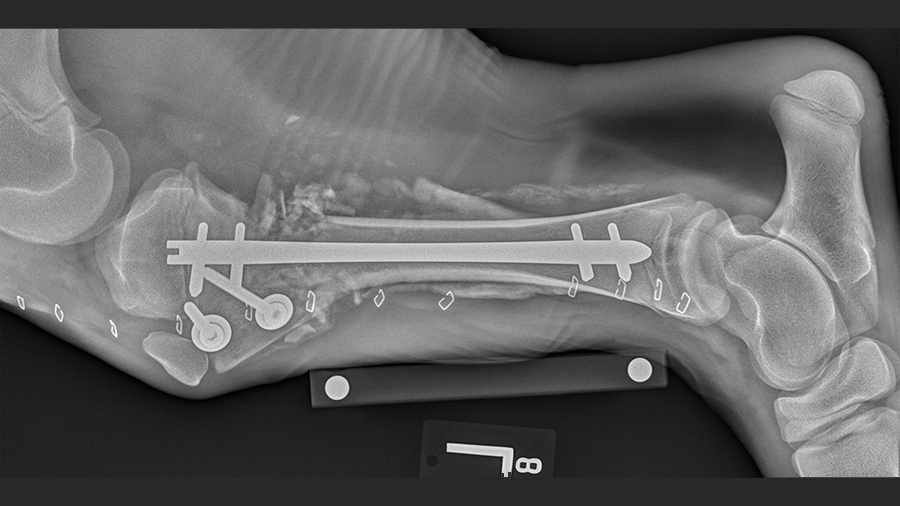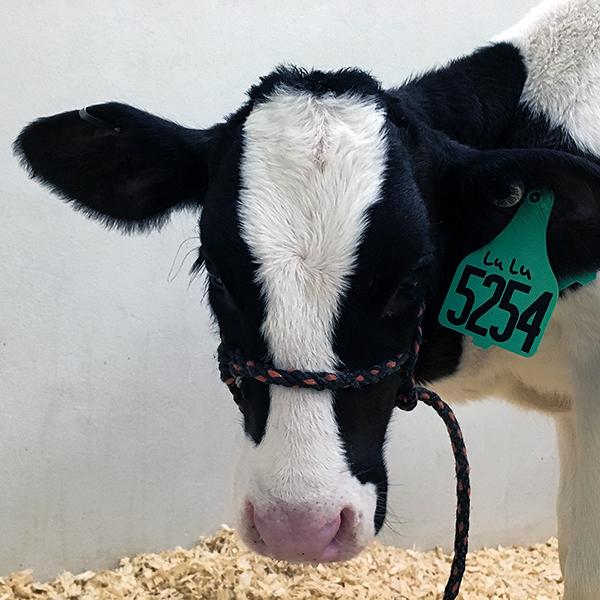Lulu, the prized Holstein calf
WITH LOÏC DÉJARDIN

In 2016, when Lulu, a calf owned by the Michigan State University (MSU) Dairy Farm in the United States, sustained a trauma during her delivery, veterinary luminary Dr Loïc Déjardin was called in to operate. The innovative surgeon is the inventor of the I-Loc® IM Fixator, an interlocking nail, which is used to treat primary fractures and plating failures in animals.
Planning considerations for surgery in a newborn animal
Déjardin, Head of Orthopedic Surgery with the MSU College of Veterinary Medicine’s Department of Small Animal Clinical Sciences and an AO VET Veterinary Expert Group member of the AO Technical Commission, explains the significance of ensuring the calf’s survival.
“Lulu was an embryo transfer, with high genetic potential for dairy producers,” says Déjardin. The eye-catching Holstein, with its distinctive black-and-white markings, is known to be the world's highest-production dairy breed. “Therefore, when Lulu sustained a comminuted proximal metaphyseal fracture of the left tibia from complications secondary to calving, the university worked hard to ensure her survival.”
Preplanning played an essential role, says Déjardin.
“Because of the proximity of the fracture from the physis, and the young age of the cow, we had to be sure to plan the surgery well,” he explains. To rehearse, Déjardin and his colleagues, veterinarians Krista Gazzola and Danielle Marturello, printed computed tomography-based 3-D models of both tibias.
Initially, one of the plans was to conduct the surgery using plates, yet Déjardin pressed to use an interlocking nail, arguing with the logic that the plate would fail due to the weakness of the bone, and the lack of sufficient bone to anchor the screws.
“I didn’t realize at the time how important this solution would be for the four-day-old calf,” he adds.
When Déjardin went in to repair the fracture, he found that the young calf bone was even softer than expected, with no structural strength whatsoever.
“You cannot anchor anything in it,” he recalls.
The interlocking nail: an impressively small solution with a lot of strength
Déjardin explains: “During surgery, reduction was difficult, because I could not manipulate the bone fragments with any surgical tools without risking creating secondary fractures. I had to do a small, two-centimeter resection to realign the cranial metaphyseal fragment. The impetus for using a nail rather than a plate was threefold: 1) being inside of the bone, the nail cannot fail by pulling out of the bone as a plate might do in soft bone, 2) the nail could go through the growth plate with significant risk of affecting bone growth, and 3) both locking bolts could be anchored below the growth plate. I put an 8mm x 160mm I-Loc interlocking nail with two bolts proximally and distally into the bone. Because the bone was so soft, I was able to lightly press the nail in.”
Over the next weeks and months, the team waited and carefully monitored Lulu in order to track her growth using radiographs and CT scans.
Déjardin’s invention is not new to fracture repair; interlocking nails have been used in human traumatology for decades, as they combine biological and mechanical advantages over conventional plate systems. What makes the I-Loc® IM Fixator solution superior is the way it is designed to prevent postoperative instability through an innovative mechanical interlock between the nail and the bolts, which allows for immediate weight-bearing activity.
“Interlocking nails range from 3 to 8 mm in diameter, and we used the largest size available on Lulu, who was 100 pounds at the time of fixation,” says Déjardin. “Lulu offered us the unique opportunity to study the nail, as at surgery, she was the weight of a large breed dog, yet had the potential to become much taller and heavier very quickly. Indeed, Lulu was approximately 450 pounds just six months after surgery and is 700 pounds today.”
Radiographic evidence showed that the surgery was a complete success, Déjardin says.
“Lulu was discharged two weeks later. Successive CT scans and radiographs showed that the nail was well-centered, allowing for symmetrical growth, and that the nail’s small footprint did not impact the physis and normal axial growth,” Déjardin explains.
Collecting data to improve patient care
Today, Lulu, who is healthy and fully grown, is a popular figure at MSU due to the successful surgery Déjardin and his team conducted using the university’s patented surgical solution.
“Through Lulu’s case, we learned that in calves there is about a 60 percent complication rate in fixing this type of fracture. Conventional methods such as bone plates are prone to failure due to soft bone. Additionally, the fracture configuration may require screw placement at the level of the physis, which results in angular deformities and/or growth arrest,” he says. “With Lulu, any kind of plating would have been unsuccessful, due to the lack of structural property in her newly-formed bones.”
Déjardin and the university team are currently collecting cases of trauma-affected cats and dogs that have sustained long bone fractures of the femur, tibia, and humerus. This study is designed to offer guidelines for the use of the assorted I-Loc® sizes in small animals affected by trauma. Lulu’s case provides the team with additional insight into the versatility of the implant and may act as a guideline for subsequent use in similar clinical situations involving large and giant breed dogs.



